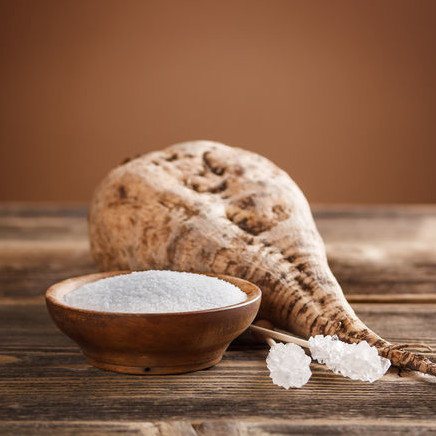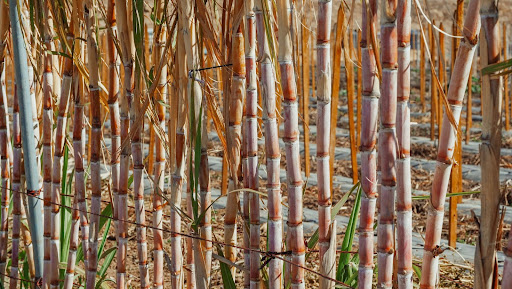Exploring the Distinctions in Uses and Advantages In Between Beet Sugar Vs Cane Sugar
In the cooking world, the option between beet sugar and cane sugar is not simply concerning sweet taste but entails a nuanced consideration of taste, application, and influence. While both sugars stem from different plants, each goes through one-of-a-kind production processes that discreetly affect their qualities and viability for numerous meals.
Origins and Production Processes of Beet and Cane Sugar

Walking stick sugar, on the other hand, comes from the sugarcane plant, an exotic lawn belonging to Southeast Asia yet currently grown in exotic zones worldwide. The production of cane sugar starts with the harvesting of cane stalks, which are crushed to launch the juice. This juice is after that steamed to focus it, after which it is rotated in centrifuges to create raw sugar crystals. These crystals are additional refined to create the white sugar typically offered in shops.

Nutritional Content and Health And Wellness Considerations

When comparing the nutritional material of beet sugar and cane sugar, it becomes noticeable that both kinds basically offer the same caloric worths, with about 16 calories per teaspoon and no significant nutrient diversity. Each is made up almost totally of sucrose, which is a basic carb that provides quick power yet lacks vitamins, minerals, or fiber. This similarity includes their effect on wellness, especially concerning blood sugar level degrees. Both sugars, when consumed in excess, can add to raised blood sugar levels, a risk variable for diabetic issues and other metabolic problems. Furthermore, excessive consumption can cause weight gain and dental troubles, as both sugars are equally cariogenic, advertising dental caries. From a health viewpoint, moderating consumption of any sort of sugar, whether from beet or cane, is recommended to stay clear of these potential adverse results on well-being. Thus, neither holds a distinctive advantage over the various other in regards to health advantages.
Taste Accounts and Culinary Applications
Despite their similar chemical structures, beet sugar and cane sugar differ subtly in flavor, which can influence their use in various cooking contexts. Walking cane sugar commonly lugs a tip of molasses, also in its polished type, providing a warm, caramel-like undertone that enhances baked goods, dig this coffee, and chocolate-based dishes. This mild molasses taste is specifically valued in the cooking market for adding depth to sweets and pastries. On the other hand, beet sugar is characterized by its highly refined, neutral preference, making it a flexible sweetener that does not change the taste profiles of dishes. This neutrality is especially valuable in fragile dishes, such as light pastries, lotions, and some sauces, where the integral tastes of other ingredients are planned to attract attention. Consequently, chefs and food suppliers may select one kind of sugar over the various other based on the desired taste result of their cooking developments.
Environmental Influence and Sustainability
While both beet and cane sugars are obtained from plants, their ecological influences vary significantly due to the distinctive techniques of cultivation and handling needed for each. Sugar beet cultivation usually entails extensive mechanization, which can increase fossil fuel consumption and carbon emissions.
Additionally, the processing of sugarcane commonly creates a considerable amount of waste, including bagasse, which, although usable as biofuel, regularly adds to air contamination if burned inefficiently. visite site Sugar beet processing utilizes even more of the raw materials, leading more tips here to less waste. Both sectors encounter difficulties in minimizing their environmental footprints, however ongoing innovations in farming methods and waste management are intending to improve sustainability.
Economic Elements Affecting the Sugar Industry
The financial dynamics of the sugar sector are substantially influenced by international market needs and profession policies. Aspects such as tariffs, subsidies, and global trade arrangements play vital roles fit the affordable landscape. In areas where sugarcane or sugar beet manufacturing is subsidized, manufacturers may have a monetary benefit that allows them to offer lower prices on the worldwide market. This can develop differences in earnings and market accessibility for producers in countries without such subsidies.
Furthermore, changes in worldwide need for sugar, affected by nutritional fads and commercial usage in food, directly impact rates and manufacturing degrees. beet sugar vs cane sugar. Weather likewise play a critical function, as they can significantly affect plant yields and, consequently, the supply chain. This variability introduces a level of financial unpredictability that can bring about financial investment volatility in sugar production industries, influencing decisions from growing to market approach
Verdict
In verdict, both beet and cane sugar have distinct high qualities that fit different cooking needs. While cane sugar conveys a rich taste ideal for improving baked products, beet sugar's nonpartisanship is best for lighter recipes.